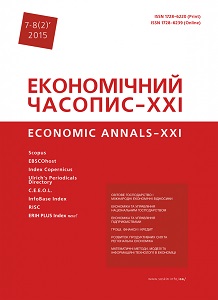Моделювання процесів електронної логістики Інтернет-магазину з використанням розфарбованих комбінованих (за часом) мереж Петрі
Modelling of online store’s e-logistics processes with coloured combined (timed) Petri nets
Author(s): Volodymyr Skitsko, Halyna MelnykSubject(s): Economy
Published by: Institute of Society Transformation
Keywords: Online Store; Coloured Combined (Timed) Petri Nets; E-Logistics
Summary/Abstract: Introduction. The main place in e-commerce is taken by online shops with the buyers as a source of profit. It is necessary to be able to construct the work with them correctly. One of the research tools for this is modelling of relationships between buyers and online shops in the context of e-logistics. The purpose of the article is to develop a conceptual approach to the usage of coloured timed Petri nets in e-logistics processes of online shops modelling (in terms of their interaction with the buyers) and build an appropriate simulation model. Results. Based on the assumptions about the behaviour of the buyers of online shops, we defined the rules that appear in the form of an appropriate coloured combined (timed) Petri nets. We identified values and initial marking of sets, as well as delays in transitions in Petri nets. Practical examples of the constructed coloured combined (timed) Petri nets application have been given. The problem of modelling can be reduced by the setting of achievable markings with the consideration of time delays in the transitions in coloured combined Petri nets. Active transitions and their usage rules were defined. A simulation of all transitions and achievable markings of coloured combined Petri nets are represented in the form of a tree (graph). Conclusions. The constructed operating model based on coloured combined (timed) Petri nets allows making changes in the conceptual functioning of e-logistics and logical schemes at both design and operational stages. Simulation of the buyers’ behaviour partially allows predicting their demands and actions. Consequently, online stores operations are optimized in order to have additional time to search for various goods, pay for selected ones, make suggestions regarding unavailable goods, replace certain goods with similar products at a lower price. Simulation of the manager’s behaviour helps to satisfy the buyer’s demands more effectively. The results can be used as a basis for further theoretical and practical research in e-logistics, management of online shops, etc.
Journal: Економічний часопис - ХХІ
- Issue Year: 153/2015
- Issue No: 07+08 (2)
- Page Range: 65-68
- Page Count: 4

